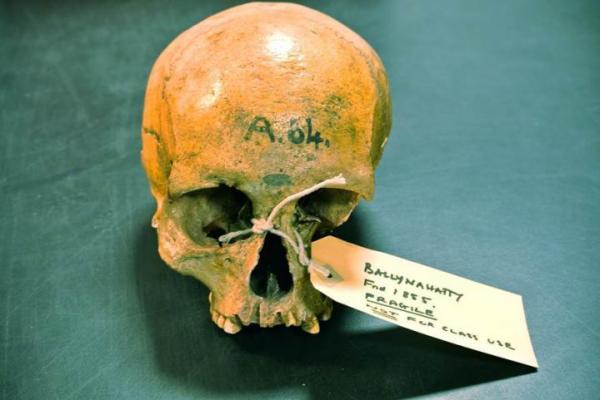
DUBLIN, Ireland, Dec. 28 (UPI) — Scientists in Ireland have sequenced the genomes of some of the island nation’s earliest settlers.
The sequenced genomes belong to a woman farmer who lived near Belfast 5,200 years ago and three men who lived during the Bronze Age around 4,000 years ago.
Tracing the genes of ancient peoples may help researcher better understand Ireland’s history. Scientists are keen to learn whether the technological achievements and transitions of early humans — adopting agriculture, building and using stone and metal tools — were the product of local innovation or precipitated by external migrations. Genome sequencing can help solve these problems.
The latest genomic results suggests influxes of people drove technological change in early Ireland. Analysis suggests the early farmer woman derived much of her genome from Middle Eastern ancestry — the region where agriculture first emerged in human history.
The genomes of the three Bronze Age men, on the other hand, reveal a heavy genetic influence from the peoples of the Pontic Steppe, a region of Eurasia stretching across the northern shores of the Black Sea.
“There was a great wave of genome change that swept into Europe from above the Black Sea into Bronze Age Europe and we now know it washed all the way to the shores of its most westerly island,” lead researcher Dan Bradley, a professor of population genetics at Trinity College Dublin, said in a press release. “And this degree of genetic change invites the possibility of other associated changes, perhaps even the introduction of language ancestral to western Celtic tongues.”
Bradley and his colleagues detailed their findings in a new paper, published this week in the journal PNAS.
“It is clear that this project has demonstrated what a powerful tool ancient DNA analysis can provide in answering questions which have long perplexed academics regarding the origins of the Irish,” added study co-author Eileen Murphy, an archaeologist at Queen’s University Belfast.
The genetic analysis suggested the woman farmer likely looked more like the people of southern Europe — black hair and brown eyes. Meanwhile, the men boasted genetic characteristics more similar to modern day Irish.
The three men also possessed the coding for a genetic disease called haemochromatosis, an inability to properly absorb iron. The C282Y mutation is ubiquitous among those of Irish descent, so much so that it’s often referred to as Celtic disease.
The latest results are the earliest evidence of Celtic disease, marking the emergence of a significant disease variant in prehistory.
“Genetic affinity is strongest between the Bronze Age genomes and modern Irish, Scottish and Welsh, suggesting establishment of central attributes of the insular Celtic genome some 4,000 years ago,” said co-author Lara Cassidy, a geneticist at Trinity.





